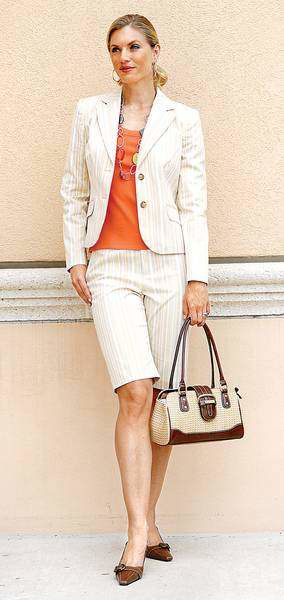Don’t let casual comfort trump a professional image
Published 5:00 am Saturday, June 21, 2008

- Don’t let casual comfort trump a professional image
ORLANDO, Fla. — Fashion police, brace yourselves. Here comes summer — and with it, a heat rash of inappropriate office attire.
As the mercury rises, so do dress-code violations. Suits, ties and dress shoes are abandoned in favor of more skin-baring garb.
“It’s hot. People want to be comfortable,” said Diane Schwartz, a certified image consultant from Delray Beach, Fla. “But you’ve still got to dress for business first.”
But how to combine cool, casual comfort with a sharp business vibe? That question has been giving headaches to bosses ever since “dress-down Friday” and “business-casual” entered the lexicon in the early 1990s.
Almost two decades later, “business-casual” is still a misunderstood and much-abused concept. “Casual” has become “sloppy,” and business leaders have had enough.
“Business-casual has its place,” Schwartz said. “But the guidelines have been very vague, and managers haven’t known how to enforce it. So there’s been this knee-jerk reaction back to formal business attire.”
Dress codes are being rewritten, she said, enforcement measures discussed and image professionals hired to help define what attire is business-appropriate.
No one enjoys the role of fashion police, she said, which is why a comprehensive dress code — with the do’s and don’ts and penalties for noncompliance clearly spelled out — is essential.
Dress does matter because how you dress sends a message “about you and about the business you work for,” said Lisa Maile, an image consultant from Winter Park, Fla. A too-casual wardrobe suggests an uncaring attitude. Dressier attire suggests “competence, a focus on business, professionalism.”
Dress codes aside, common sense is the key to choosing workplace attire, Schwartz said.
“Wardrobe is a big part of your business arsenal,” she said. “When you get dressed in the morning, think about where you’re going, what you’re doing, who you’re meeting, what message you want to send and what you want to achieve — and then dress accordingly.”
Delivering the message
There’s a fine line between reasonably conservative and downright repressive, said Lydia Gardner, Orange County, Fla., clerk of courts.
At one time, female employees at the courthouse had to wear skirts, she said, “and they were actually made to kneel down to make sure the hems were hitting the floor. To me that sounded ludicrous.”
Soon after she introduced business-casual dressing to her department, however, “people got carried away, coming in wearing flip-flops, jeans, capri pants,” she recalls. “It showed a very casual regard for the kind of work we do here at the courthouse.”
To more clearly illustrate the concept of business-casual, she had a fashion coordinator from Stein Mart present a “do’s and don’ts” fashion show for her employees.
“They really got the message after that,” said Gardner.
But the best way to ensure employees dress appropriately, she said, is for managers to set an outstanding example.
Policing employee attire is a thankless task, said Sherry Meadows Lewis, director of marketing and public relations at the Orange County Regional History Center.
“People can take it very personally, being told they have too much cleavage or midriff showing,” said Lewis, who has had to address both problems in previous jobs.
To avoid possible charges of sexual harassment when dealing with sensitive dress-code violations, supervisors should invite another manager or a human-resources representative to be present, said Jamie Yasko-Mangum, an image consultant from Casselberry, Fla.
Another option is to have violations handled by a small committee comprised of supervisors and peers, both male and female.
Legally, employers do have the right to impose a dress code, and in most cases, they can require separate grooming standards, such as allowing long hair for women but not for men, said Yasko-Mangum.
The role of fashion police is overrated, said Nanci Cole-Odom, vice-president for human resources at the AAA Auto Club South in Tampa, Fla.
“Most people know when they’re dressed inappropriately. Peer pressure usually takes care of that,” said Cole-Odom.
Her dress-for-success advice is simple: “If in doubt, don’t wear it.”






